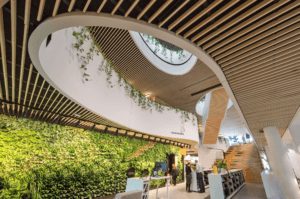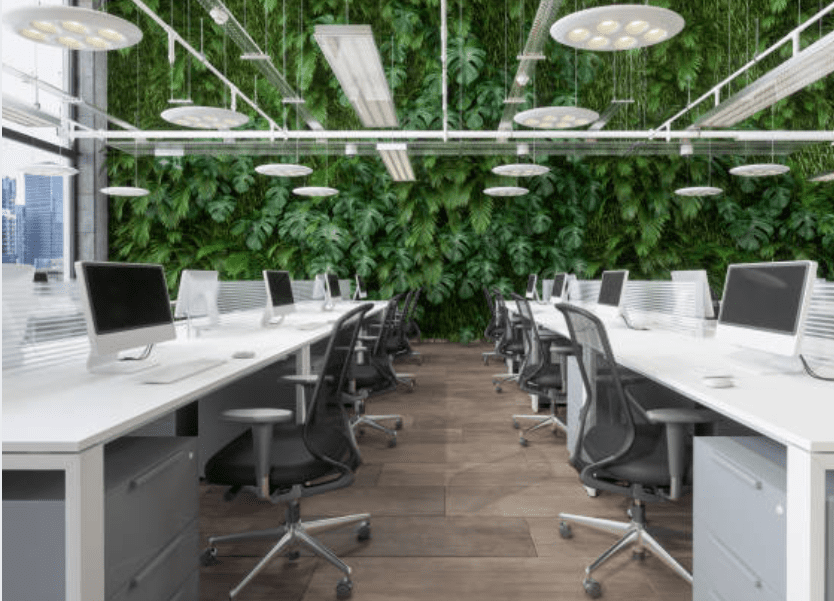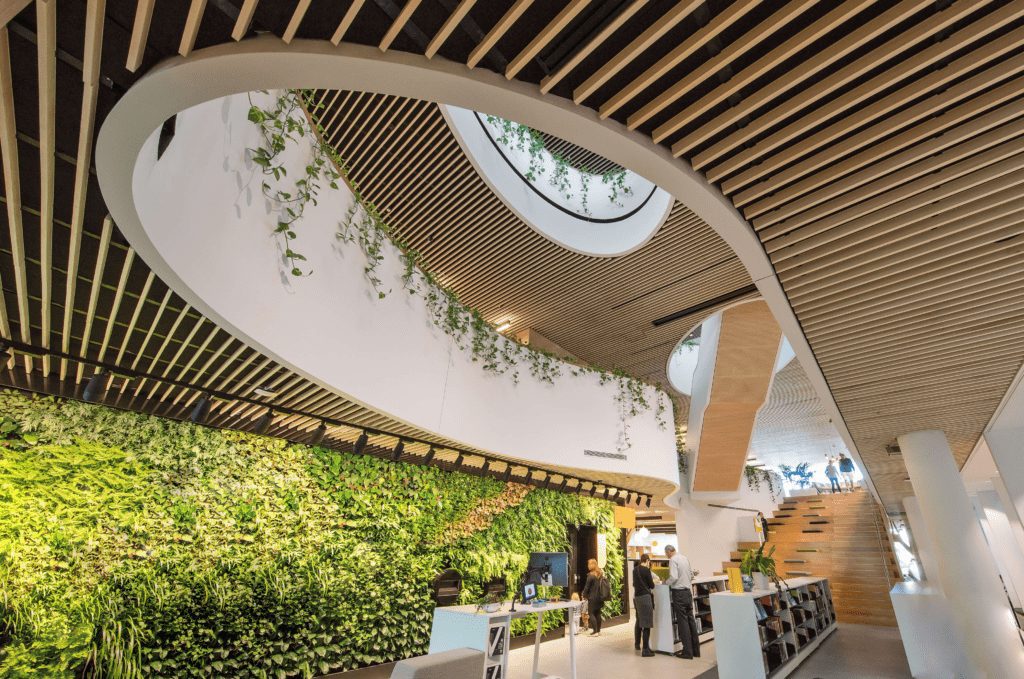The Objective of Wellbeing Design is to Remove Harmful Chemicals from the Built Environment
Through wellbeing design, our central objective really is to remove harmful chemicals from the built environment that are prohibiting people from living healthy lives. Just a few thousand years back humans were building shelter exclusively out of what was around them – natural materials like wood from trees, clay, stone, and other products that they found in the environment. It turns out the building products that we primarily build with now contain chemicals that are often very toxic to human bodies. Toxins can now be found in almost every building product in conventionally built structures.
It is imperative for us to know more, especially as designers, builders and architects. It is our job to know, at a minimum, enough to not include materials that contain chemicals in the buildings that we are designing.
The International Living Future Institute produces Red List of hazardous materials that should be avoided when designing, here are a few items on the list :
- Alkylphenols & Related Compounds
- Antimicrobials (Marketed with a Health Claim)
- Asbestos Compounds
- Bisphenol A (BPA) & Structural Analogues
- California-Banned Solvents
- Chlorinated Polymers Including PVC, PVDC, Chloroprene (Neoprene Monomer), and CPVC
- Chlorobenzenes
- Formaldehyde (Added)
- Wood Treatments Containing Creosote or Pentachlorophenol

For the complete Red List check out the Living Future Institute.
Let’s dive a bit deeper into some of these materials. You may be wondering “why they are considered harmful?”
In this article, we will focus on four hazardous materials: Antimicrobials (Marketed with a Health Claim), Asbestos Compounds, Formaldehyde (Added), and Wood Treatments Containing Creosote or Pentachlorophenol.
Antimicrobials (Marketed with a Health Claim)
Antimicrobials are a class of chemicals designed to kill or inhibit the growth of microbes. Antimicrobials are frequently used in soaps and building materials, including countertops, paints, and doorknobs. Nineteen antimicrobials were banned in soaps and body washes by the FDA in 2016. Antimicrobials used in building materials are regulated by the EPA as a pesticide, falling outside the FDA’s ban scope. Antimicrobials are often used as a preservative in building materials, but the health benefits of their use have not been established or substantiated. Some antimicrobials are endocrine disruptors and have been shown to impair learning and weaken muscle function.
Asbestos Compounds
Asbestos is a mineral fiber that is used in a variety of construction materials for its strength and heat resisting capabilities. It is often found in wall insulation, vinyl floor coverings, paint compounds, roofing, heat-resistant fabrics, and automobile brakes. Exposure occurs as asbestos fibers are released into the air during use, demolition, work, building, or repair of asbestos-containing materials. Asbestos is a known human carcinogen, increasing the risks of lung cancer, mesothelioma, and asbestosis.
Formaldehyde (Added)
The International Research on Cancer and the State of California classifies Formaldehyde as a known human carcinogen. Common health effects at low levels of exposure to this volatile organic compound include irritation and sensitization, and the compound also acts as an asthma trigger. Long-term exposure is associated with nasal cancers and leukemia.
Wood Treatments Containing Creosote or Pentachlorophenol
Many conventional wood treatments introduce a litany of human health and environmental problems. The traits that make wood treatments effective at retarding rot and insect damage are also effective at damaging many other forms of life. According to the US Department of Health and Human Services, creosote exposure is associated with skin and scrotum cancer in humans, and liver, kidney, and gestational problems in laboratory animals. Inorganic arsenic is not only an acute toxin; it is a known human carcinogen. Pentachlorophenol is linked to liver and immune system damage in humans, and reproductive and thyroid damage in laboratory animals.
Above we have listed several products that should not be in your building but what are the alternatives? Check out part two of this blog for recommendations and notable suppliers that are green building champions in the world of design.
Article Reference: The Red List, Living Future Institute
Written By: Trish Matthews, Jotveer Pakkar












